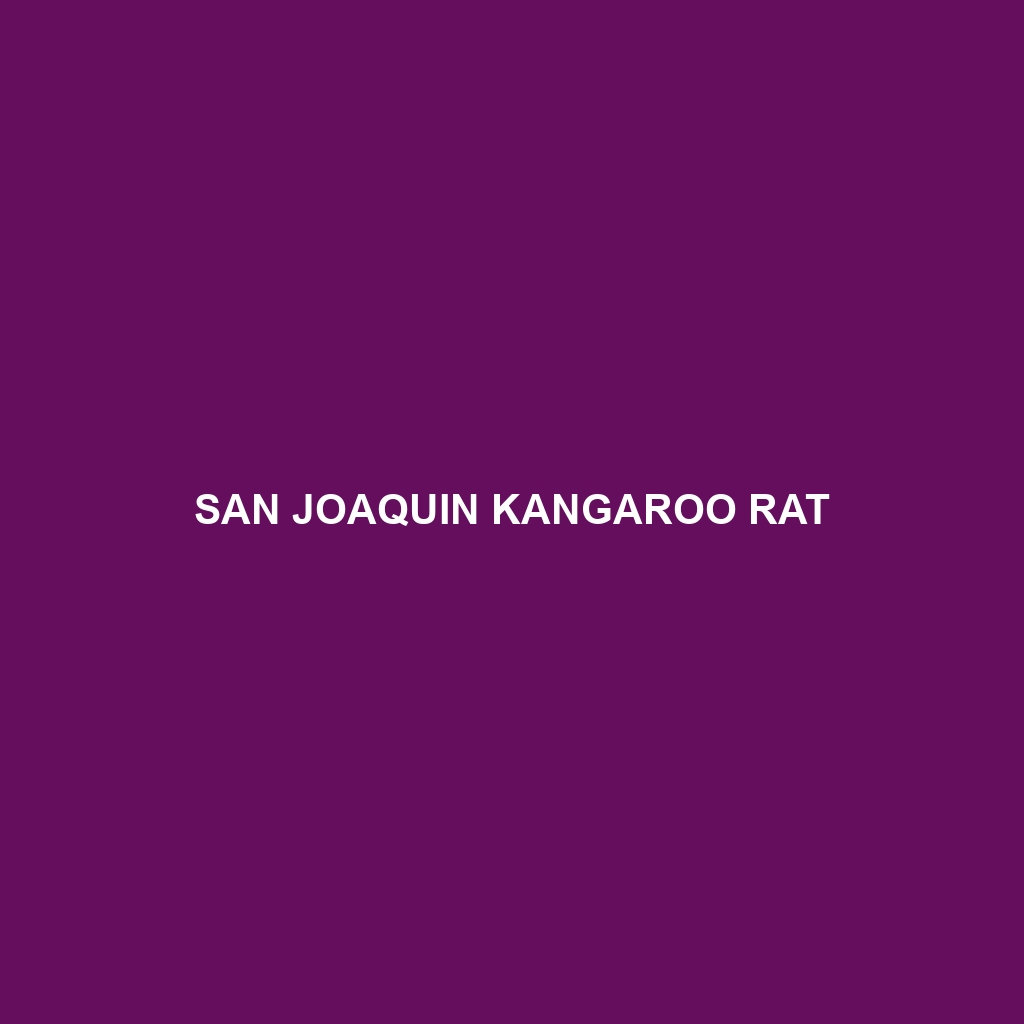Species Description: San Joaquin Kangaroo Rat
Common Name: San Joaquin Kangaroo Rat
Scientific Name: Dipodomys nitratoides
Habitat
The San Joaquin Kangaroo Rat is primarily found in the San Joaquin Valley of California, USA. This rodent typically inhabits arid and semi-arid environments, favoring grassy plains, open shrublands, and areas with sparse vegetation. They thrive in regions with sandy or loamy soils, which facilitate their burrowing behaviors. This unique habitat is critical for their survival, as it provides shelter and food sources.
Physical Characteristics
The San Joaquin Kangaroo Rat is relatively small, measuring about 6 to 9 inches in length, excluding its long tail, which can be an additional 6 to 8 inches. Their fur is primarily light brown or tan with white underparts, allowing for camouflage in their natural surroundings. Notable features include large hind legs adapted for jumping, and long ears that aid in hearing potential predators. Their distinctive tufted tails help with balance while navigating their habitat.
Behavior
San Joaquin Kangaroo Rats are primarily nocturnal and are known for their unique hopping gait. They exhibit various behaviors including burrowing into the ground to create a complex tunnel system, which serves as protection from predators and extreme temperatures. These creatures are also known for their territorial nature, often marking their burrows with scent to deter rivals. Their nocturnal lifestyle allows them to avoid the daytime heat, and they are excellent at conserving water.
Diet
These kangaroo rats are granivorous, primarily feeding on seeds, grains, and occasionally green plant material. Their diet includes a variety of native grasses and herbaceous plants. They possess cheek pouches that enable them to transport food back to their burrows for storage. Their feeding habits play a crucial role in the ecosystem, as they help in the dispersal of seeds, promoting plant diversity.
Reproduction
San Joaquin Kangaroo Rats breed mainly in the spring and summer months, with a gestation period of about 30 days. A female can give birth to 3 to 5 offspring per litter. The young are born blind and helpless but develop quickly. Mothers care for their young in the safety of their burrows until they are ready to emerge and fend for themselves. This rapid reproduction rate is vital for maintaining their population amidst habitat loss.
Conservation Status
The San Joaquin Kangaroo Rat is classified as endangered under the Endangered Species Act due to significant habitat destruction and fragmentation primarily caused by agriculture, urbanization, and the introduction of invasive species. Conservation efforts are essential to protect and rehabilitate their remaining habitats.
Interesting Facts
This remarkable species can survive without drinking water, obtaining the moisture they need from the seeds they consume. Additionally, they are capable of jumping up to several feet in a single leap, enabling them to escape from predators quickly. Their unique adaptations make them one of the most interesting small mammals in their ecosystem.
Role in Ecosystem
The San Joaquin Kangaroo Rat plays a vital role in its ecosystem by acting as both a herbivore and a prey species. Their burrowing behavior aerates the soil, promotes seed germination, and influences plant community structures. As prey, they are an important food source for predators such as owls, snakes, and coyotes, thereby contributing to the ecological balance.
